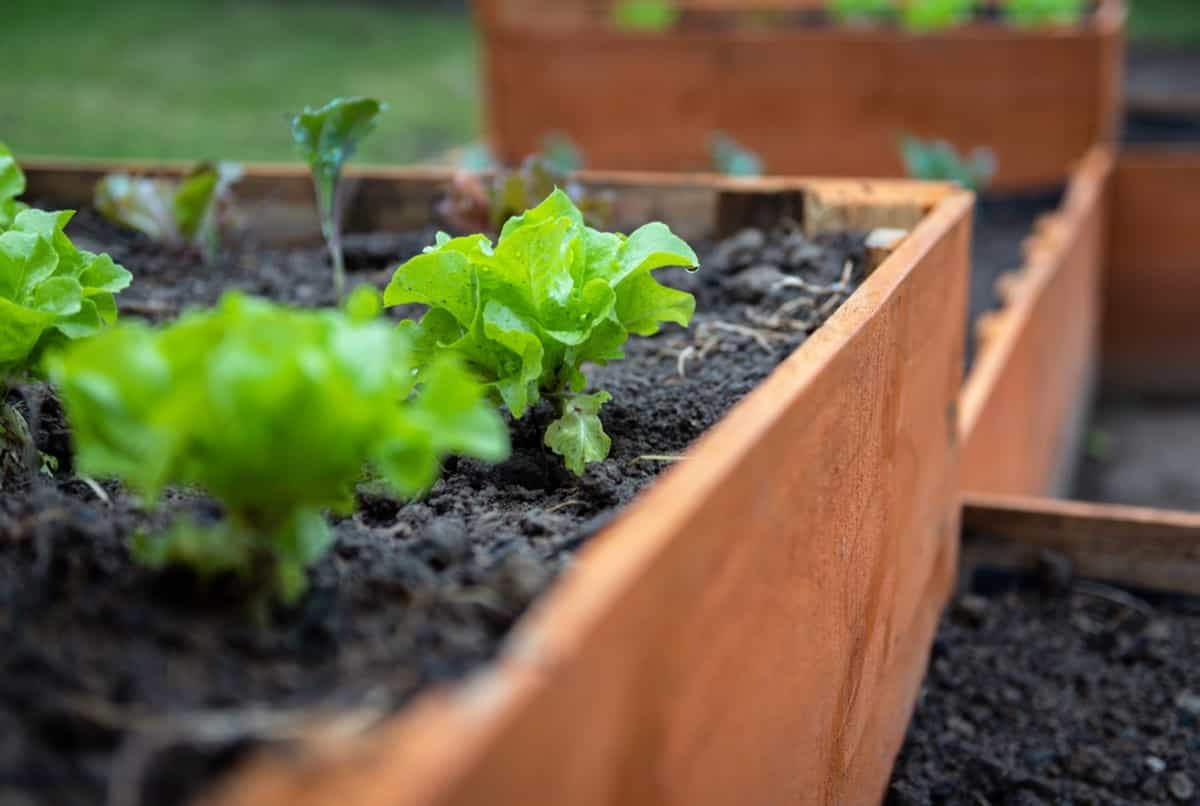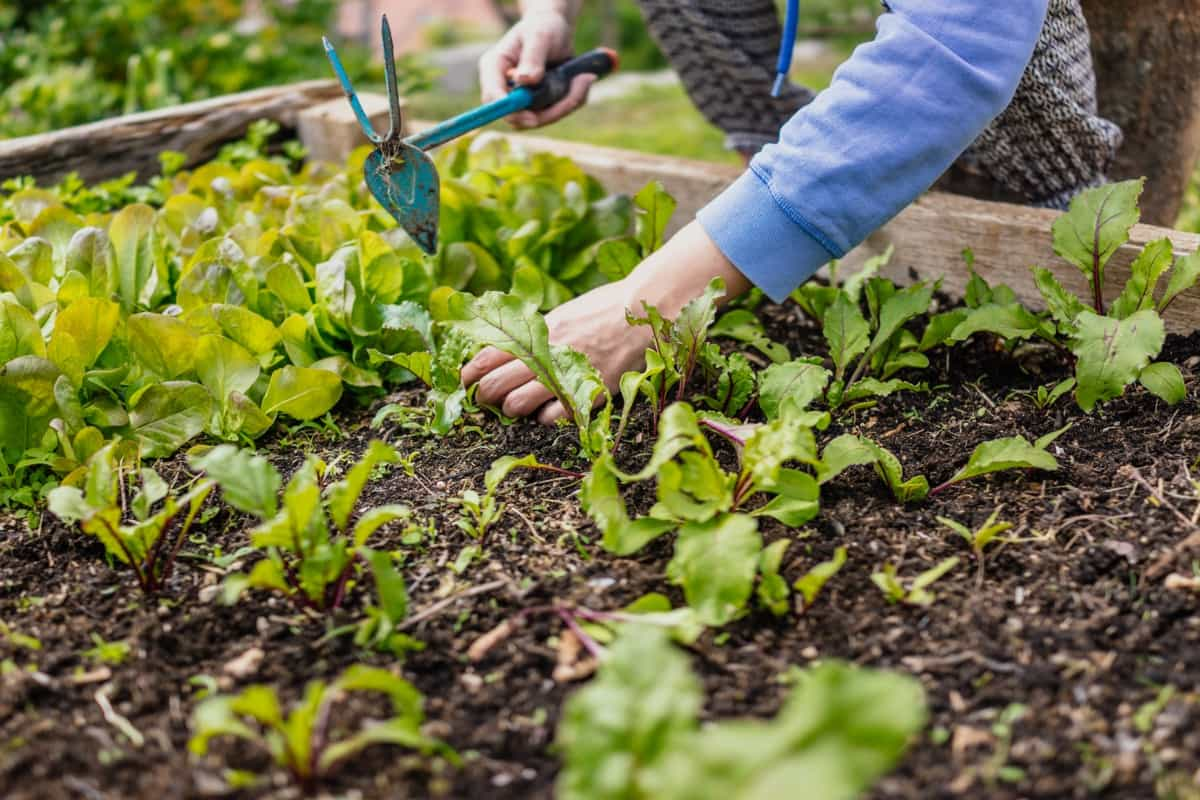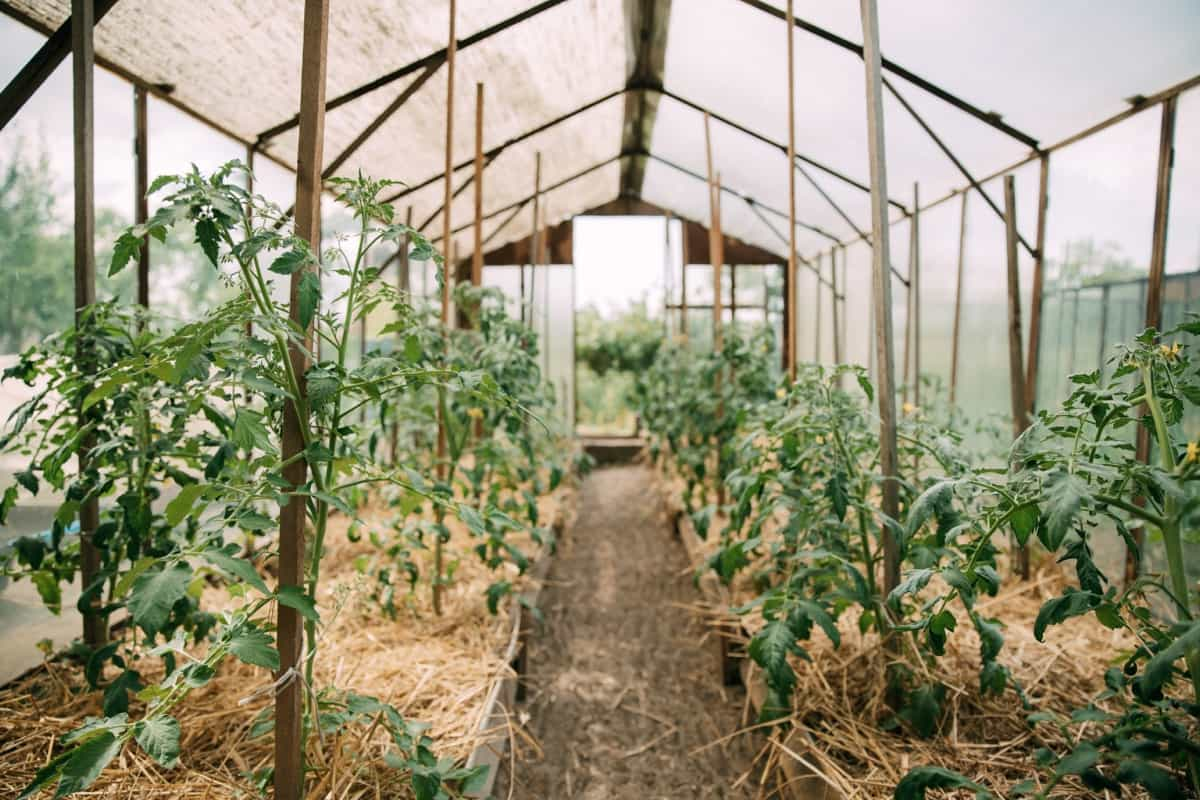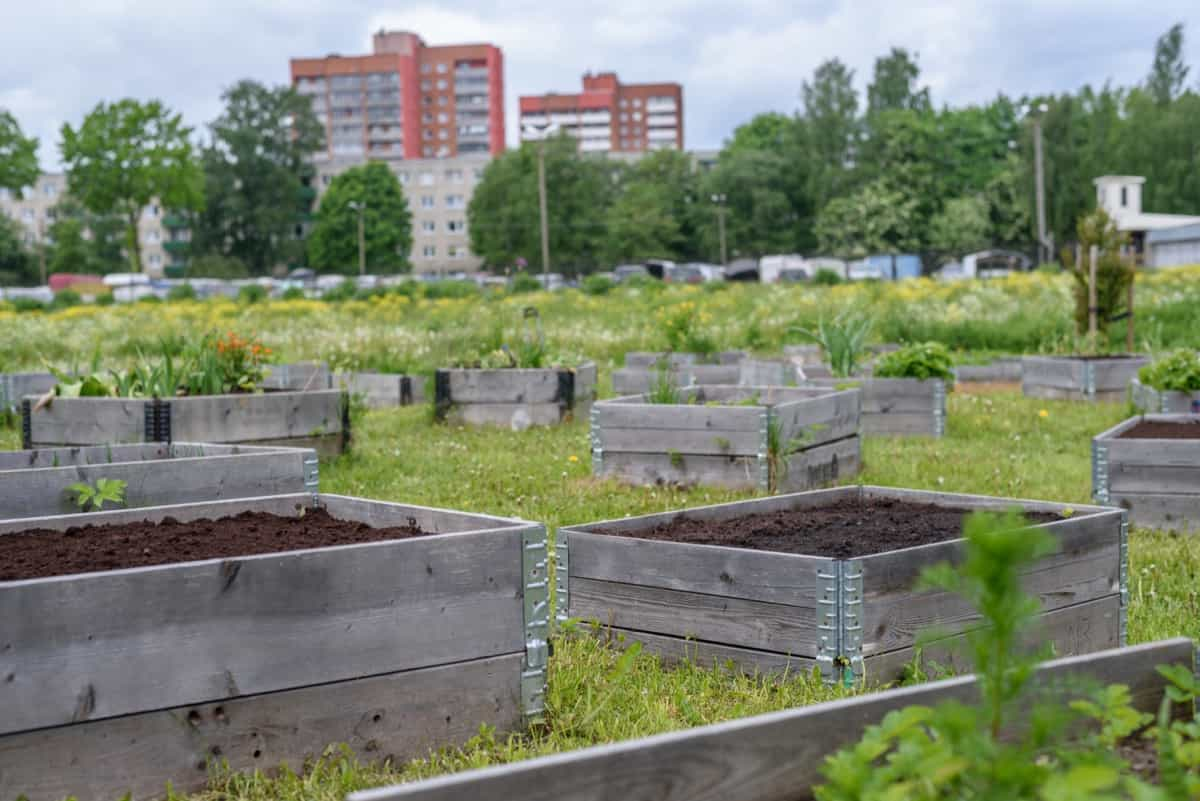Proper drainage is key for the health and success of any garden, especially those grown in a raised bed. When soil is waterlogged, plant roots become deprived of oxygen, leading to root rot and other issues. Proper drainage allows excess water to escape from the soil, ensuring that plants receive the right amount of moisture without becoming oversaturated.

This can help protect against soil compaction as well as nutrient loss. Also, good drainage promotes healthy microbial activity in the soil, supporting root growth and overall plant health. Ultimately, taking steps to improve drainage will give your plants an ideal growing environment while reducing potential problems caused by excessive moisture levels in the soil.
How to Improve Drainage in a Raised Garden Bed
Add Compost
Compost helps by increasing soil porosity, allowing water to flow more easily. It breaks up compacted soil and improves aeration. Composting can be done in several ways. You can use kitchen scraps, leaves, grass clippings, and other organic matter as inputs for your compost pile.
Once you have collected enough material, layer them into a pile or bin and let nature do its work. As the organic matter decomposes, it releases nutrients beneficial for plant growth. These nutrients help plants establish healthy root systems that are better equipped to absorb water from the soil. Using homemade compost is good for improving drainage and is environmentally friendly since it reduces the amount of waste going into landfills.
Use Soil Amendments
One of the key ways to improve drainage in a raised garden bed is using soil amendments. These organic materials can be added to your soil to help it drain. One of the options for improving drainage in your raised bed is by using vermiculite or perlite. These lightweight materials help keep the soil loose and airy, allowing water to flow more easily. They also provide insulation against temperature extremes, helping your plants stay comfortable year-round.
In case you missed it: Top 10 Best Vegetables to Grow in Raised Beds: Ultimate Guide for Planting to Harvest

Consider adding biochar or rock minerals like gypsum or limestone to improve drainage in your raised bed. These materials help balance out pH levels in the soil while also providing essential minerals that promote plant growth. You can choose any soil amendment and mix it thoroughly into the top few inches of your garden bed before planting anything new. This will ensure that the water can penetrate deep enough into the soil without causing any problems with root rot or other moisture-related issues.
Use Cover Crops
Cover crops are the best way to improve the drainage in your raised garden bed. These crops help break up compacted soil, increase organic matter, and allow water to penetrate more easily. Cover crops also provide other benefits like suppressing weeds, preventing erosion, and attracting beneficial insects.
One of the best cover crop options for improving drainage is Clover. This plant has deep roots that can penetrate through heavy soils, and it’s known for its ability to draw nitrogen from the air into the soil. Other good choices include Buckwheat, Rye, and Fava Beans. To use cover crops effectively in your raised garden bed, sow them directly into the soil after your harvest season ends.
You should choose a variety that will thrive in your climate zone. Once grown enough, cut back any excess growth before turning them under with a spade or tiller. Allow time for decomposition before planting new plants on top of this layer. Cover crops are an easy and natural way to improve soil health while increasing drainage in your raised garden bed.
Use Sheet Composting
Another tip to improve drainage in a raised garden bed is sheet composting. Sheet composting involves layering organic materials on top of the soil, which will eventually decompose and add nutrients to the soil. To start sheet composting, lay a layer of cardboard or newspaper on the soil. This will help suppress growing weeds while allowing water to penetrate the soil below. Next, add layers of organic material such as leaves, grass clippings, and kitchen scraps.
In case you missed it: How to Grow Tabasco Peppers from Seeds: At Home, In Pots, Raised Beds, Terraces, and Backyard

These materials should be chopped finely so they break down faster. Make sure each layer is no more than 4 inches thick. After adding all your layers, cover them with a final layer of mulch or straw. This will help maintain moisture levels in the soil while keeping pests away from your garden bed. Sheet composting improves drainage and adds important nutrients to the soil for healthy plant growth. It’s an effective way to maintain good drainage in your raised garden beds without breaking the bank.
Use Mulch
Mulch is one of the most versatile tools that you can use in your raised garden bed. It helps retain moisture, regulates soil temperature, and prevents weeds from taking over. Organic mulches such as shredded leaves, straw, or wood chips are ideal for a raised garden bed because they break down slowly over time and add valuable nutrients to the soil. Inorganic mulches like plastic sheeting or gravel may effectively suppress weeds but offer no additional benefits to the soil.
When applying mulch, be sure not to pile it too high around plant stems, as this can encourage rotting. A layer of two inches should suffice for most plants. It’s important to note that some plants prefer certain types of mulch acidic-loving Blueberries thrive with pine needles, while Tomatoes enjoy grass clippings. Mulch is also eco-friendly since it reduces water evaporation and minimizes weed growth without using chemical herbicides or pesticides. Incorporating organic matter like mulch into your gardening routine is a smart move towards healthier crops and more productive yields.
Avoid Pulling Plants Up by the Root
Pulling up a plant by the root can be tempting when it’s not doing well in your raised garden bed. It can disturb the soil and harm nearby plants. Instead of pulling up a struggling plant, diagnose the issue first. If you determine the plant needs to be removed, use scissors or pruning shears to cut off the stem at ground level. This will leave the roots intact and minimize disturbance to the surrounding soil.
Leaving the roots in place also allows them to decompose naturally, adding organic matter to your soil. This can improve drainage and nutrient availability for future plants. In addition, cutting off stems instead of pulling up roots reduces the risk of introducing weed seeds into your raised bed. Weeds can quickly take over if given a chance, so minimizing their presence is important for maintaining healthy plants.
In case you missed it: How to Grow Ghost Peppers from Seed: At Home, in Pots, Raised Beds, Terrace, and Backyard

Aerating the Soil
Aerating the soil is essential to improve drainage in a raised garden bed. When soil becomes compacted, water can’t penetrate it properly and will cause standing water which can drown roots or harbor disease-causing fungi. Compacted soil also makes it difficult for plant roots to spread and access nutrients. A garden fork or spade is the best way to aerate your garden bed. Insert the tool straight into the soil and wiggle it back and forth, creating small holes throughout the bed.
You don’t dig too deep, just enough to loosen up any compacted areas. Another option for aerating your soil is by adding worms. Worms create channels through the dirt as they move around, allowing air and water to flow freely. You should aerate your raised bed at least once every season, preferably before planting new crops each time to maintain healthy growing conditions supporting root development.
Increase Drainage Around the Raised Bed Too
The most effective way to improve drainage in your raised garden bed is by increasing it around the edges. This can be achieved using simple techniques that require little effort or expertise. Firstly, you can create a shallow trench around the perimeter and fill it with small gravel or stones around your raised bed. This will allow excess water towards the trench, preventing waterlogging within your bed.
Another way to increase drainage is by sloping the ground around your raised bed away from it. This ensures that runoff water flows away from your plants instead of accumulating within them. Consider installing rain gutters on nearby structures like sheds or garages to redirect rainfall away from your garden area. Improving drainage directly in and around your raised garden beds will ensure healthier plants that grow stronger without becoming overwatered or prone to root rot.
Prepare A Drainage System for Your Raised Beds
Installing a drainage system for your raised garden bed can be the best thing you can do to improve its overall health. A good drainage system removes excess water from your soil, preventing root disease and reducing erosion. One way to install a drainage system is by using perforated pipes. These pipes allow water to flow through them while keeping the soil intact.
In case you missed it: 9 Common Raised Bed Gardening Mistakes: Every Gardener Must Avoid Them

You should install these pipes regularly at the bottom of your bed before adding soil. You can create channels within the beds that direct excess water away from plant roots towards an outlet point, such as a drainpipe or guttering around it. Ensure that no obstructions are blocking proper movement and removal of excess moisture like leaves and twigs. This could cause blockages leading to stagnant areas in the beds, causing root rot, among other diseases.
Use Raised Bed Liners
Raised bed liners are essential for gardeners who want to improve drainage in their raised garden beds. These liners are the barrier between the soil and the sides of your raised bed, preventing water from seeping through and helping to maintain optimal moisture levels in your soil. Several materials are available for raised bed liners, including plastic, fabric, and metal. Plastic liners are great for retaining moisture in your soil. Fabric liners allow air and water to flow freely while providing excellent protection against weeds.
Metal liners offer durability but can be more expensive than other options. When installing a raised bed liner, ensure it covers the bottom of your raised bed completely with no gaps or holes where water could leak out. You may also consider adding drainage holes in the bottom of your liner to allow excess water to escape. Using a raised bed liner effectively improves drainage in your garden beds while protecting against weeds and other pests.
Things You Should Avoid in Raised Beds
When it comes to raised garden beds, you should avoid doing a few things to maintain healthy plants and good drainage. First, avoid over-watering your plants, leading to waterlogging and root rot. Make sure not to plant too densely or overcrowd your bed, leading to poor air and water circulation.
Another thing to avoid is using treated lumber that may contain harmful chemicals which could leach into the soil and affect plant growth. Instead, opt for natural materials such as cedar or redwood. Don’t forget about maintaining proper pH levels in your soil. Avoid adding lime unnecessarily since most vegetables prefer slightly acidic soils with a pH range between 6-7.
In case you missed it: How to Grow Peanuts in Raised Beds: Soil, Propagation, Planting, and Care

Conclusion
Proper drainage is key in growing your plants in a raised garden bed. Use high-quality soil with good drainage properties, add organic matter such as compost or mulch regularly, avoid compacting the soil by stepping on it too much, create enough space between plants for air circulation, and consider adding rocks or gravel at the bottom of your garden bed. Implementing some tips can improve your raised bed’s drainage system while promoting soil fertility and overall plant health.
- Broccoli Seed Germination and Selection
- Asparagus Seed Germination and Variety Selection
- Seasonal Flower Gardening: Best Practices for Spring, Summer, Fall, and Winter
- How to Grow Hibiscus from Flower
- Plantation Ideas for Home Decoration: A Beginners Guide
- Flower Garden Designs and Layouts for Beginners
- Planting and Spacing Techniques in Papaya: A Beginner’s Guide
- Growing Gold: Essential Techniques for Planting Pineapples
- How to Make Kalanchoe Plant Bushy: Home Remedies and Solutions
- 11 Reasons Why Your Gardenia is Not Blooming: Home Remedies and Solutions
- Eco Elegance: The Guide to Designing a Drought-Tolerant Landscape
- Gardening on a Slope: Strategies for Hillside Landscaping
- Nourish and Flourish: Top Organic Mulches for Thriving House Plants
- Everything You Want to Know about Indian Mogra Flower: Discover Uses and Growing
- Green Thumb Success: Expert Tips for Cultivating Greenhouse Pumpkins All Year Round
- Maximize Growth & Flavor: The Ultimate Guide to Companion Planting in Herb Gardens
- How to Control Rhododendron Problems Naturally: Home Remedies and Organic Ways to Fix Them
- Natural Magic: The Remarkable Benefits of Cinnamon for Plants
- Best Steps to Revive Dying Tulip with Natural and Organic Treatment
- 10 Reasons Why Your Angel Trumpet is Not Blooming: Remedies and Treatment
- How to Fix Periwinkle Leaf and Flower-Related Problems: Natural Remedies and Solutions
- How to Fix Zinnias Leaf and Flower Problems: Discover Natural and Home Remedies
- Organic Steps to Induce Lemon Tree Flowers: A Comprehensive Guide
- Bloom Booster: Crafting the Perfect Homemade Bougainvillea Fertilizer
- Optimizing Growth: A Guide to Applying NPK Fertilizer for Potted Plants
- 10 Best Homemade Fertilizers for Rubber Plant: DIY Recipes and Application Method
- How to Boost Female Pumpkin Flowers: Effective Steps for More Flowers and High Yields
- Transform Your Indoor Garden: Top Benefits of Pink Salt for Houseplants
- 10 Best Homemade Fertilizers for Peacock Plants (Calathea): Easy DIY Guide
- Unlock Blooms: 9 Reasons Why Your Potted Chrysanthemum is Not Blooming
- 8 Reasons Why Your Potted Hibiscus is Not Blooming: Fix it with Simple Solutions
- Unlock Blooms: 9 Key Reasons Your Potted Frangipani Won’t Flower
- 10 Reasons Why Is My Ice Plant Not Blooming: Remedies and Treatment
- 10 Reasons Why My Potted Hydrangea Not Blooming: Treatment and Remedies
- 10 Reasons Why is My Wisteria Not Blooming: Remedies and Treatment
- 10 Reasons Why is My Goldfish Plant Not Blooming: Remedies and Treatment